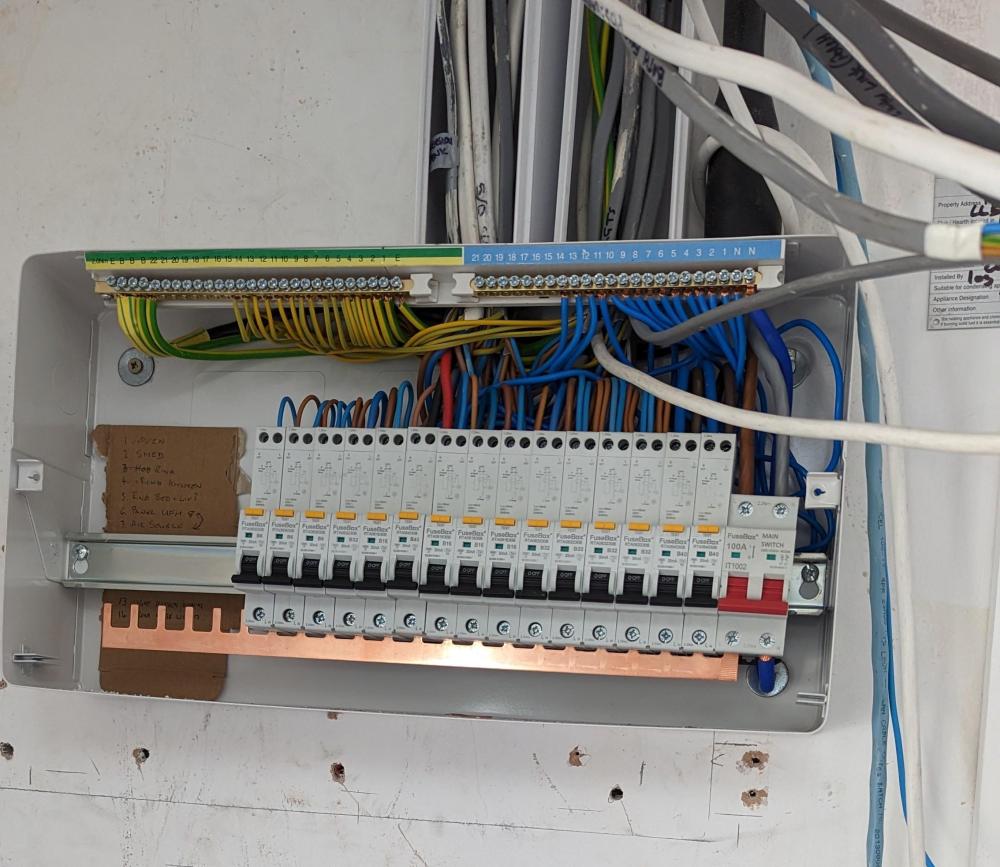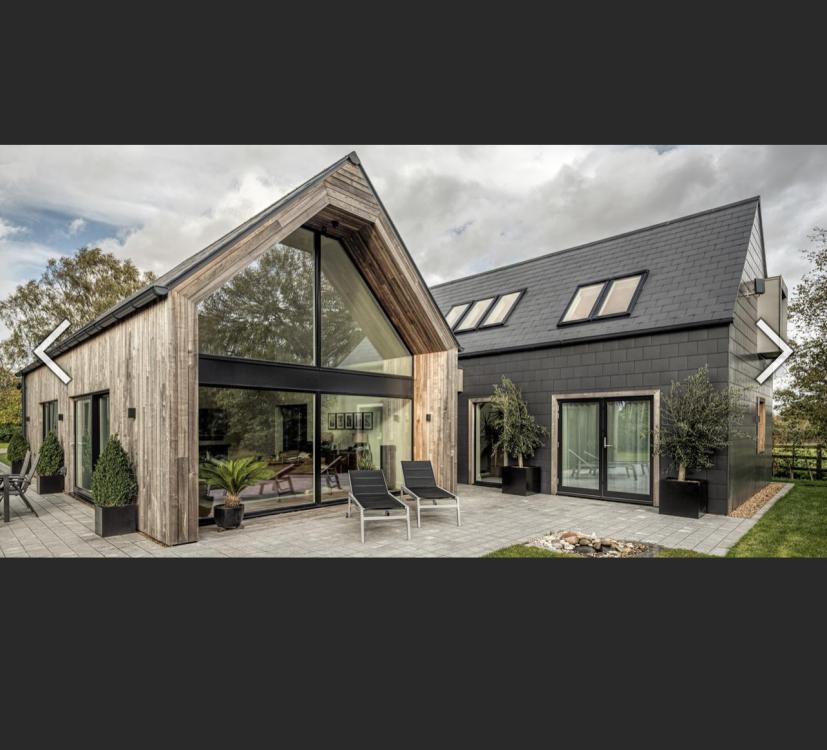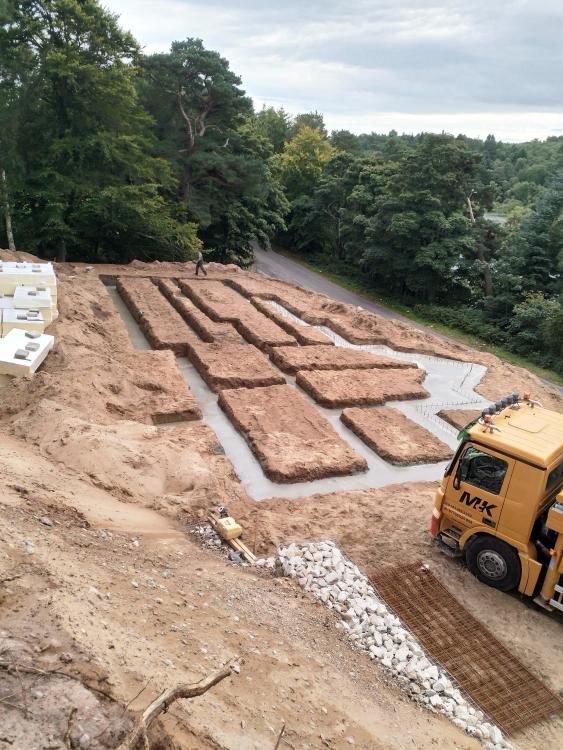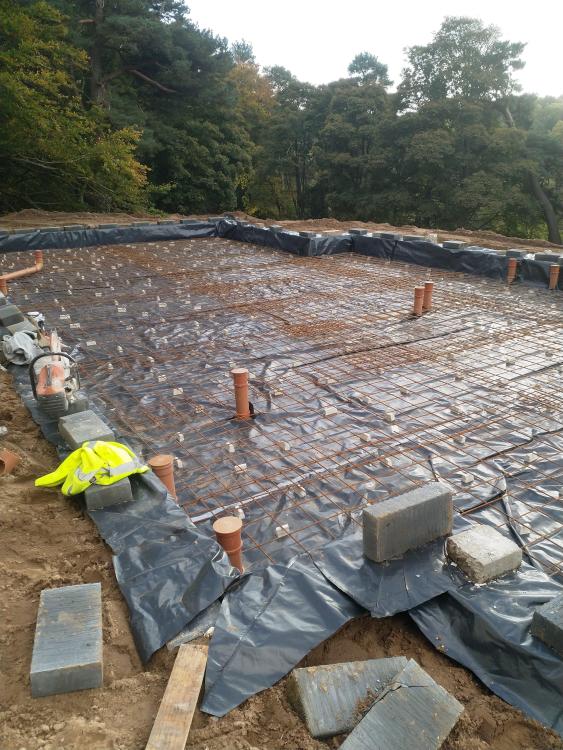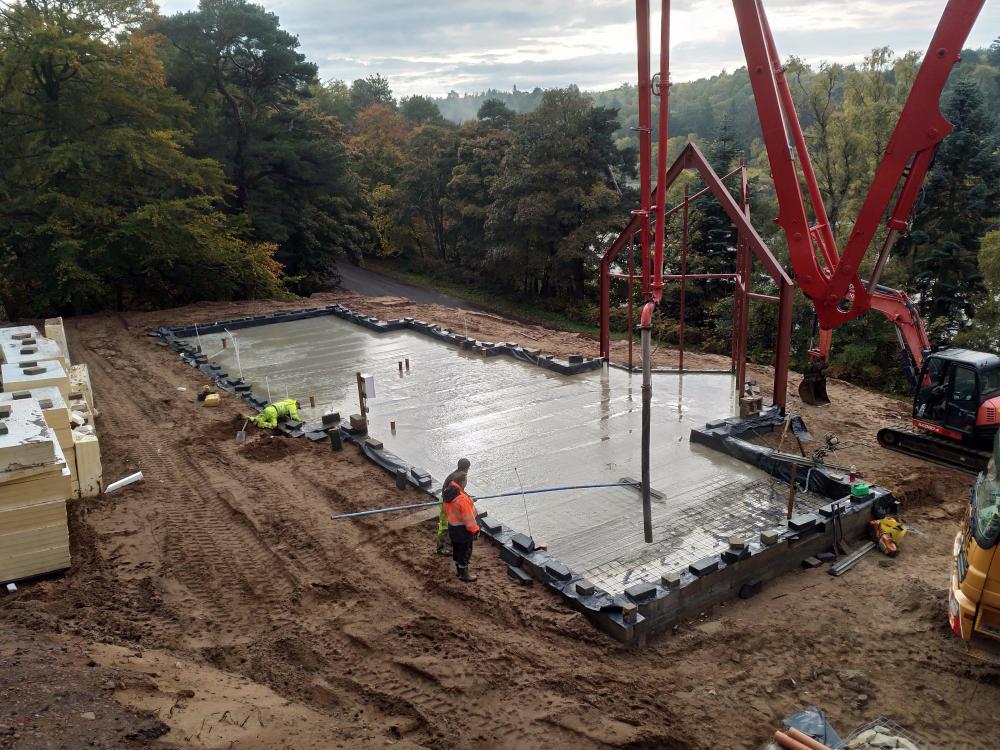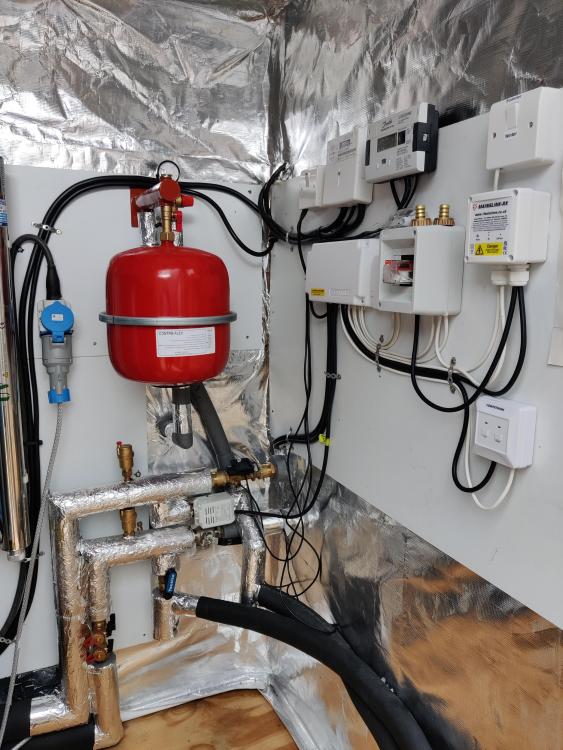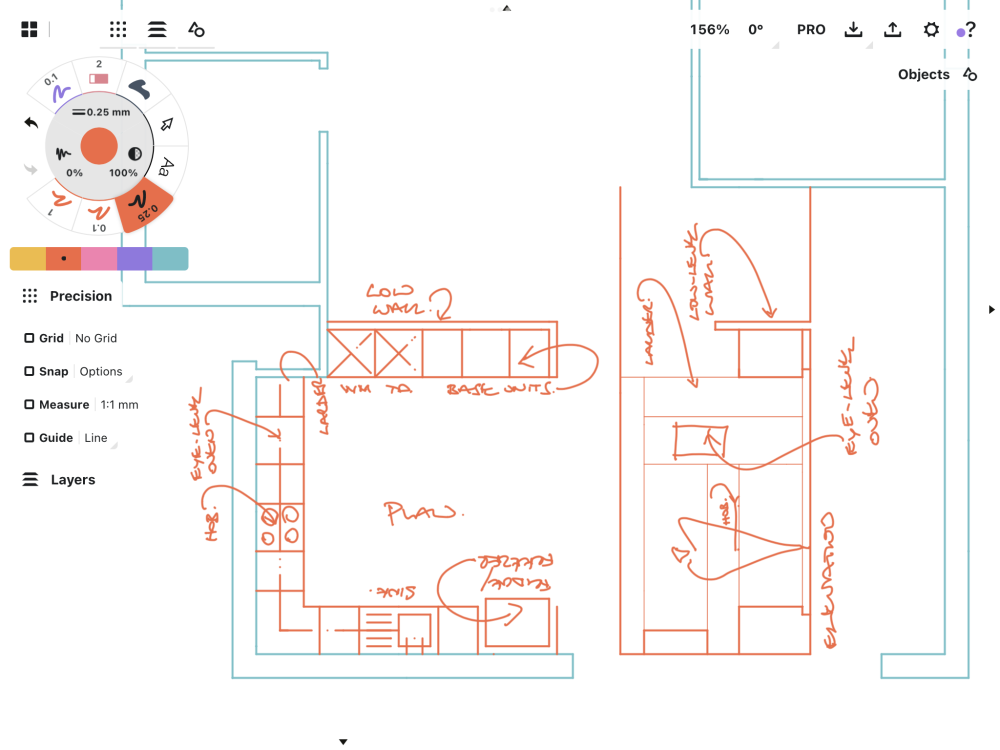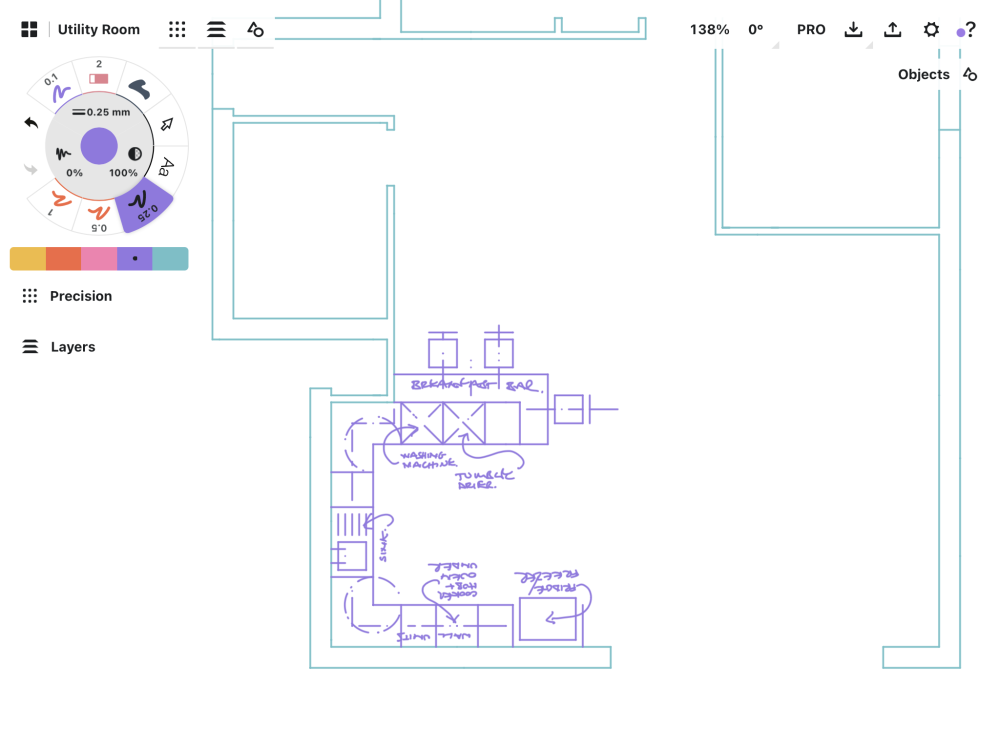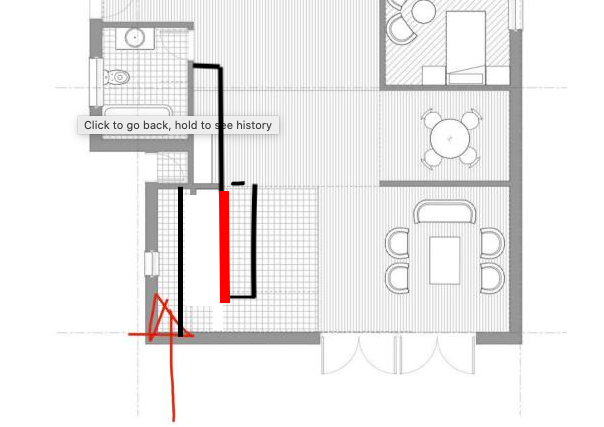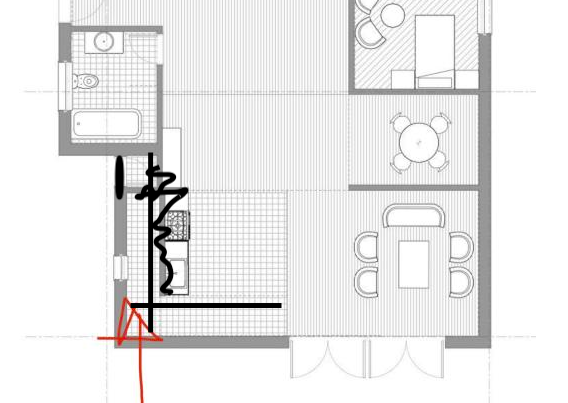Leaderboard
Popular Content
Showing content with the highest reputation on 05/15/23 in all areas
-
Hi all, Just updating. New sparks came in today. Ripped it out and started again. Also added a new isolation switch and SPD on the feed into the armoured cable near the meter coming in. Back tomorrow to finish off. Thanks again for all the advice. Been a £1100 lesson but I appreciate all the feedback from you all. Cheers.4 points
-
Is that a mist coat or a full 2 coats of paint . Looks like the new plaster has drawn the paint in like a sponge and rolled in multiple directions .Paint it like you would cut stripes in a lawn and keep the wet edge going by slightly overlapping your last roller line.2 points
-
Agree with this. And staircases should either lovely feature staircases that make a statement or hidden away taking up little space. One of the nice features about our HH Longhouse is the only corridor is short and the stairs are hidden between the kitchen wall and the downstairs bedroom wall. Consequently we have more useable floor space. @ETC Very nice design. We went to visit a HebHome that was sort of similar to this design. The two buildings were joined by a glass corridor effectively. It also had a large overhanging gable that was stunning.2 points
-
2 points
-
What’s the issue? You need a 450mm x 750mm (to get the 0.33m2 requirement) clear opening located between 800mm and 1100mm above FFL. If the hinge is an issue by reducing the clear opening just get the hinge moved to give you the clear opening. It’s very easy to do and takes a few minutes to do. Problem solved!2 points
-
Hey, So I joined this forum as I am relatively new to building and renovation. Well, sort of... We renovated our first property in Bristol over the course of 2 years. It was a lovely victorian terrace house. But my input was mostly painting, basic DIY and project management for the builders we employed. Now we have purchased a detached country property in the midlands. It is actually in fairly good condition, but we are still doing some pretty major updates which I am hoping to have a much bigger input on, current upcoming projects include: 1. Complete redo of the parking area (building brick walls, repairing damaged outbuilding, laying gravel grate, installing electric gates (maybe), lighting on sensors etc) 2. Building an outdoor/indoor area over the patio (basically a roof so we can spend time outdoors even when it is raining - especially excited about BBQing all year round) 3. Redoing the kitchen/utility room 4. Complete replacement of all three bathrooms 5. Boarding out the loft for storage So....I'm certainly going to need some advice over the coming months. But I am also an avid researcher, so hope to share some of my own knowledge and insights.1 point
-
@kron77Remember that this is arguably a desirable feature of dhw tanks not related to the heat source! Stratification means you get some usable dhw more quickly than you otherwise would. Occurs with immersion heaters and gas sources just the same, depending on tank layout. Of course there are also some downsides, but to overcome it requires a pump so it's rarely done because of the positives.1 point
-
Welcome to the forum. I don't know why there are not more self builders on BuildHub using oak frames - because there are maybe a dozen oak frame companies - and they're clearly building houses for someone. If oak frame is a possibility and will provide the main structural element, then one logical questions is 'what does it get clad with'? Well you clearly need some insulation and 'something to contain it', some air-tightness, some vapour barrier, some 'rain screen' (that is, the outside layer that sheds most of the rain off), and maybe something to help control racking. Larsen trusses and, say, cellulose fibre could be a part of that. I can see SIPs being a possibility also as they would provide some of the functions above. With sandstone rock and sandy soil (and therefore reasonably firm) and the frame distributing the load mostly around the floor plate / edge of the foundation by then you can probably use any of the foundation methods you have suggested. Maybe @Gus Potter (an SE) and @GaryChaplin (an oak frame guy) will have time to comment.1 point
-
You don't need an installer to submit a G99, in its straight forward to do yourself. If you want 7 kw to use in the house then apply for 7kw and see what they come back with. If its a no then you can- Ask then to reinforce the grid so you can export 7kw Implement an export limitation system Use the 3 phase supply youve got1 point
-
If you are NOT doing it yourself and paying for someone to do it, you really need to choose a contractor that is comfortable doing the build method you want, or choose a build method your local workforce are comfortable doing. Mix and match is usually disaster. I did lots of our build either myself or was there every day and all day if I had contractors on site. Insulated raft or do you mean passive slab? We have a combination of traditional footings, but bigger and the front wide ones are all reinforced (see attached) with an upstand of concrete blocks, insulation and aircrete blocks , this then infilled with a steel reinforced slab, insulation, UFH, then more concrete to form the floor. Horses for courses. Just have a good plan of what you want to achieve, then move forward based on the first paragraph.1 point
-
Another option ( you won’t like it ) . Mask the universe out and spray it . You’ll get even cover with no brush / roller marks . But you will cry a lot .1 point
-
The wider you go the shallower the roof pitch unfortunately. Of course the ultimate is to have a complete flat roof - no height issues anywhere. I had thought of this and there are plenty of examples out there of modern houses with flat roofs but I would only suggest this if I couldn’t get a pitched roof to work. There is also the possibility of having a wide dormer window which gives increased head height but it might not look great. Don’t worry - I still have a few more things to think about. Watch this space.1 point
-
Hi just a few little observations and thoughts. I think the combo of the width & height may be an issue as you say. It’s a nice house but I can see that being a problem in planning etc. The solution may be that the width & height is reduced and you gain the volume from going back. As such this will influence everything else design wise but let’s say you are allowed to this exact house just a few things to think about some of which you have identified. yes best to have ASHP near plant room. yes bedrooms 2/3 too small. personally I think flat roofs are always a higher risk than pitched ones, and that why I avoided having any, but of course there will be plenty of successful flat roofs including amongst members houses. with your master bedroom - commonly used pocket doors can be noisy and I’d avoid in a bedroom. Also wary of walking through a dressing area into a bedroom. Real life is not like instagram, unless you have loads of designer clothes beautifully staged colour coordinated clothes, or someone is OCD, I wouldn’t walk through the dressing room and into the bedroom. id be wary about the front windows for the main living area, for privacy reasons as well as overheating. really love the way the living areas wrap round and having a quieter lounge area away from main kitchen area. with a nice flat square plot you’ll end up with a great house there.1 point
-
@saveasteading said: ''The point of sips is that it structural. I don't see the logic of oak plus sips''. My thoughts entirely. Assuming you want to keep the frame 'on show' internally why not spaced-stud out ('Larsen trusses') and fill with flexi wood-fibre, with whatever you want as a finish structure or board on the outside? (and you asked about footings - sorry!!)1 point
-
For a filler I used the brass assembly at the bottom of the silver vertical pipes. Fill and Flush Valve - 28mm from BES about £55. Worked well. For expansion you need to check if one is already installed in the ASHP, but possibly not. So you will to size based on system capacity. I used an arm coming out of the wall, which had all the control stuff and bleed already included. Flamco - Contra-Flex Heating Expansion Vessel 12 Litre FCST 012 Tesla T-BAR Expansion Vessel Fixing Bar Kit (T-BARKIT) from unvented components £60 delivered for both. For the 3 way diverter I used eBay, plenty of good deals on there.1 point
-
Assuming you won't be on the FiT Rates, a hybrid inverter should be your go to, there is absolutely no point in going AC Coupled, due to the fact you will lose a lot of energy through inverter efficiencies. You'd be going Solar PV (DC) > Inverter (DC to AC) > AC Coupled Inverter (AC to DC) > Battery (DC) With hybrid you would be going Solar PV (DC) > Inverter (DC) > Battery (DC)1 point
-
Keep us posted. So £3000 for all the parts. It would be interesting to get a feel for how many hours it takes you to install it all when you do it.1 point
-
Exactly. I’ll make the cupboard you suggested ready, if I decided to add a dryer, the space would be ready.1 point
-
I think this is an excellent idea especially if you can stack them and build a cupboard around them, I did this in a previous house in a downstairs cloakroom And it just looked like a cupboard 👍1 point
-
Many HPs have a programmable night mode setting that reduces the max allowable compressor speed to make it quieter, that ought to do it. And if actually at night then you benefit from cheap rate as well (assuming you have got E7 or one of the many Octopus tariffs). It will take longer to heat to a given set temp but you have 7 (or 4 or whatever) hours which should be more than enough. Reducing the set temp will always be helpful as it will improve the CoP in DHW mode. But I am surprised if in winter at least your 12kWh battery is going to make much of a dent in the HP's overall energy demand.1 point
-
The input from the other half which I've sanitised somewhat was 'I'd prefer if you didn't line the pockets of tesla'. That said, I do IT all day so it's not fun to spend the evening tweaking the tech. Can you turn off the mothership on the teslas? I'd read a while back about the. I intelligently deciding to charge ahead of potential storm that never happened. Can't be having my battery AI not comprehend I'd rather sit in the dark and be cold than consume peak rate electricity. I've not approached ours yet. That's tomorrows fun task.1 point
-
1 point
-
1 point
-
Agree with the comments above, a poor installer can make anything look like a bag of nails. spend time looking for a decent installer, finding recommendations etc put together a specification so that you know the quotes will all be on the same scope of works.1 point
-
Sorry I'm not very good with editing software but this is another suggestion (apologies to others if they have suggested the same). Kitchen/utility units are black, if you move the utility wall (red line) forward, you have room to put units in the utility and along the wall of the new kitchen and the bathroom with a bit of a step in the wall. It will be a long working space, but that would be ok if you need to keep an open area. Maybe put the sink and hob/oven close so you don't have to move hot pans far. Kitchen designers will come and help you plan this.1 point
-
1 point
-
1 point
-
Do you mind saying what you now hope to do? I mean what will you propose to the builder for his reaction? Keeping us informed we can perhaps point out any secondary effects of your intended changes....eg foundations, walls, floor support. Re using forums: it is OK but beware some have poor standards or poor control of troublemakers (through ignorance or malice). You are safe here but we can only deal with what you tell us as we don't have all the background.1 point
-
Yes loads of folk here on BH will be able to give you pointers.. and maybe save you lots of money. But to get the best out of BH you'll need to give us a lot more info so we can all mull it over and give you targeted feedback that applies to your site.1 point
-
Thanks @kandgmitchell. For clarification the 'other hinges' we got were still 'Reflex'-type - they look the same as those in the pic, but the bit on the RHS, which is I think 'captive' in your pic, could be made to slide across to the extreme R to 'optimise the orifice'.1 point
-
That's still the current guidance, see Paragraph 2.10 of Approved Document B Fire Safety - Volume 1 Dwellings 2019 (inc 2022 ammd's). There is one extra caveat - the cill height should be no more than 1100mm off the floor. Those hinges shown often cause a problem as the casement then intrudes onto the clear opening, as Redbeard says "other hinges are available"......1 point
-
This is from a 2010 doc from Lancs Bldg Control (first hit I found - not aware if it has been superceded. Looks about right for what I remember of last time I had to 'prove' one: "Achieving the requirement. The window should have an unobstructed clear openable area that is at least 0.33m2 and have no clear dimension less than 450mm high and 450mm wide (the route through the window may be at an angle rather than straight through), appropriate escape catches and hinges must be fitted to ensure this clear opening is achieved." We had one queried some years ago because the reflex hinges, like yours, brought the 'hinge side' of the opening light into the aperture. We were able to buy alternative hinges (the exact operation of which I cannot remember) which allowed one to push the window over (to the far right in your photo above) 'in extremis' to widen the aperture. (I hope I have not made myself abundantly unclear!) Have they given you details of their objection?1 point
-
The open area of the filter will be much smaller, than current filters, (assume not F7) causing a large pressure drop, you may have to up the fan speed considerably to get the same flow rates as you currently have.1 point
-
You may need to check that you unit is suitable for F7 as that is pretty strong [not sure if that's the right word] filter, and may affect performance if the unit isn't rated for it.1 point
-
After pondering battery storage for many years, and then the energy prices rocketing this last year, i finally decided to give energy storage a shot, working out how it would sit financially was extremely difficult, and a little bit of a finger in the wind, but as the batteries have a designed lifetime of 15years now, and energy prices rarely go down, I figured it would pay for itself with some profit over the long term, whilst also reducing my carbon emissions and reliance on the grid. As i'm just dipping my toe in, i've decided to just get a single US3000C Pylontech Battery for now, meaning that the max discharge W is around 1.8kW. I will see how this fits in, which will cover most of my loads, and if I see fit I can add a US2000C later on to give the full 3kW discharge. Went for a Solis AC Coupled 5th Generation Inverter, the graphs it produces are really informative. Will get round to taking the rackmount bits off at some point. Example of the graphs available: I will add bits to this thread over time about electric consumption. My annual consumption at the moment is looking to be around 1200-1300kWh before the battery, Export sitting around 2400kWh as excess from the solar farm, so be interesting to see what these figures do over the next 12 months. Cost so far £2450 including installation which was £650. An additional US2000C will be £748 if i decide to go ahead.1 point
-
I've always been so disappointed with the performance of LEDs and whilst they've got a lot better over the years I still don't consider them anywhere near as good as halogen in terms of their dimmability, changing colour temperature when dimmed (which I like) and colour rendition. Of course, they win hands down in running costs so I've somewhat reluctantly gradually moved over to them. Finding halogen-like GU10 replacements has been particularly difficult with disappointment after disappointment from brands I'd expect more from (eg Philips/Signify) but am pleased to say a few months ago my seemingly-eternal search concluded with the Civilight CL 5620 from well-lit. CRI of >95, dim-to-warm, anti-glare light source, built-in heatsink and a 3yr warranty. They're expensive at £13.98 each but, frankly, I got to the point where I couldn't really care less as I wanted high quality light output and nothing else was coming close. Hopefully they'll last longer than 3 years (they're rated at 25,000 hours, which is roughly 3 years of constant usage) otherwise the payback might be slim compared to the halogens they're replacing but we'll have to see. They're not perfect halogen replacements, but they're the best I've found at satisfying my requirements and subjective preferences - and they're good enough for me. One thing that helped me take the risk was their 1yr 'money back guarantee' which basically says if you don't like them you can return them within a year and get your money back. I happened to be discussing lighting on a DIY sub-forum on a car forum (like you do) and mentioned I was going to try these and wondered if anyone else had, and whether they'd had any experience of this guarantee. Much to my surprise the owner of the company happened to be on the same forum so he piped up and came across as really genuine and clearly *really* into quality lighting (that was why he'd set the company up - had basically gone through what I had but rather than just moan on forums decided to do something about it!). He said they offer that guarantee because the bulbs he sells are that good - they hardly get any returns so it's minimal risk for them. Incidentally, he too recommends the Varilight Pro (at least for non-smart control - he's more into pricey smart controllers) and these bulbs are completely stable even down to virtually zero output.1 point
-
Nah, I see your point I think, my OCD was going into overdrive. I wanted the IC's the same distance from the wall and in line - crazy but I'm going to see it everyday, and I know it'd pee me off if they were on the p*ss0 points
-
0 points
-
0 points
-
Well that didn't go well. They want a g99 application from an installer that requests a 'budget quote' for a particular configuration. So I need to overspec a system before they will give any indication of what is possible.0 points


